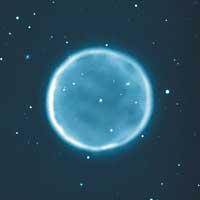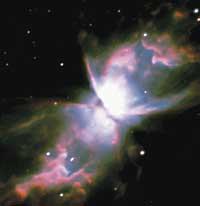The mystery about the appearance of nebulae, unveiled
class="art-text" valign="top">

Astronomers did not know why most planetary nebulae are not spherical. Now, a group of German astronomers have received for the first time direct evidence on the influence of magnetic fields.
Planetary nebulae arise when stars like the Sun reach the end of their life. Contrary to what might be expected, most have no spherical shape, since about 80% are bipolar or elliptical. To explain how and why they adopt that aspect, there were several theories.
Some consider that esfericity breaks due to the wind caused by a nearby star. Others consider it to be due to the centrifugal effect. However, the most powerful theory of late was that of the magnetic field. And now they have shown that they worked correctly.

Apparently, the matter that comes out of the star is trapped in the magnetic field, which makes the planetary nebulae so unique and elegant. The team of astronomers has studied four nebulae with the FORS1 spectrograph of the VLT telescope in Chile, and have verified the existence of magnetic fields in all four. These zones have between 1,000 and 3,000 Gauss, that is, a thousand times smaller than that of the Sun.
The next step is to measure the magnetic field of the central stars of the spherical planetary nebulae. If the theory is direct, the magnetic field of these stars must be weaker. Research will help understand the relationship between the magnetic field and the shape of the nebula.
Buletina
Bidali zure helbide elektronikoa eta jaso asteroko buletina zure sarrera-ontzian











